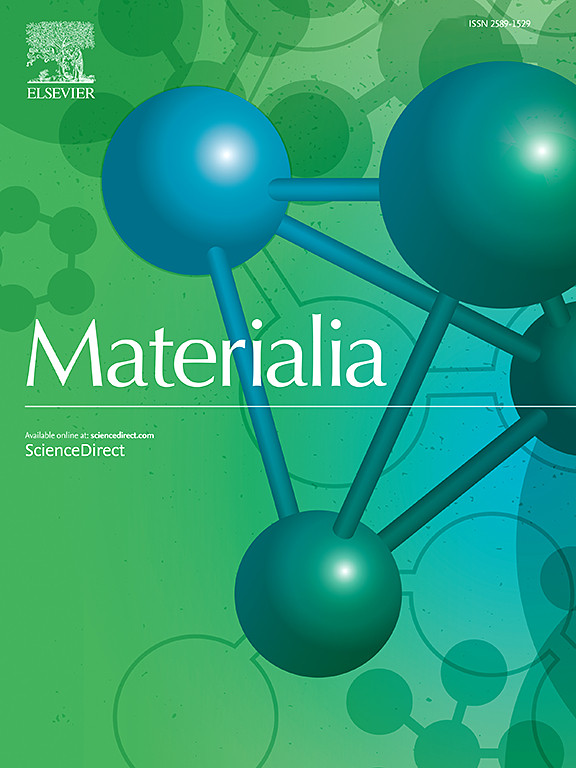Ti2-xZrxMnCrFeNi高熵Laves氢化物的实验与机器学习结合探索
IF 3
Q2 MATERIALS SCIENCE, MULTIDISCIPLINARY
引用次数: 0
摘要
合成了一系列高熵ab2型Ti2-xZrxMnCrFeNi合金(x = 0.6, 0.7, 0.8, 0.9, 1.0, 1.1和1.2),研究了其储氢和化学压缩的潜力。从结构、显微组织和热力学性能等方面探讨了Ti/Zr比的影响。将合成的高熵合金的存储容量、反应焓和熵的变化与机器学习(ML)的预测结果进行比较,以研究这些性质在探索的成分空间中的变化。结果表明,在25℃下,随着Zr含量的降低,氢化物生成焓持续降低,平台压力从8 bar增加到90 bar H2,与ML预测一致。所选择的组合物(x = 1.0和1.2)在150次循环中表现出可逆储氢能力,容量为1.34-1.40 wt % H2,在室温下具有显著的反应动力学(<;4分钟)。这些实验和计算结果突出了Laves-HEA系统作为可调、稳定和具有成本效益的材料的潜力,适用于固定储氢和压缩应用的长期操作。本文章由计算机程序翻译,如有差异,请以英文原文为准。

A combined experimental and machine learning exploration of Ti2-xZrxMnCrFeNi high entropy Laves hydrides
A series of high entropy AB2-type Ti2-xZrxMnCrFeNi alloys (x = 0.6, 0.7, 0.8, 0.9, 1.0, 1.1 and 1.2) were synthesized to investigate their potential for hydrogen storage and chemical compression. The influence of the Ti/Zr ratio was explored in terms of structural, microstructural and thermodynamic properties. The storage capacity together with the reaction enthalpy and entropy changes of the synthesized high entropy alloys were compared to predictions from Machine Learning (ML) to investigate changes in these properties across the explored composition space. The results revealed that a decreasing Zr content consistently lowered the hydride formation enthalpy and increased the plateau pressure from 8 to >90 bar H2 at 25 °C, in good agreement with ML predictions. Selected compositions (x = 1.0 and 1.2) demonstrated reversible hydrogen storage capability over 150 cycles, with capacities of 1.34–1.40 wt % H2 and remarkable reaction kinetics (<4 min) at ambient temperature. These experimental and computational findings highlight the potential of this Laves-HEA system as tuneable, stable, and cost-effective materials suitable for long-term operations in stationary hydrogen storage and compression applications.
求助全文
通过发布文献求助,成功后即可免费获取论文全文。
去求助
来源期刊

Materialia
MATERIALS SCIENCE, MULTIDISCIPLINARY-
CiteScore
6.40
自引率
2.90%
发文量
345
审稿时长
36 days
期刊介绍:
Materialia is a multidisciplinary journal of materials science and engineering that publishes original peer-reviewed research articles. Articles in Materialia advance the understanding of the relationship between processing, structure, property, and function of materials.
Materialia publishes full-length research articles, review articles, and letters (short communications). In addition to receiving direct submissions, Materialia also accepts transfers from Acta Materialia, Inc. partner journals. Materialia offers authors the choice to publish on an open access model (with author fee), or on a subscription model (with no author fee).
 求助内容:
求助内容: 应助结果提醒方式:
应助结果提醒方式:


